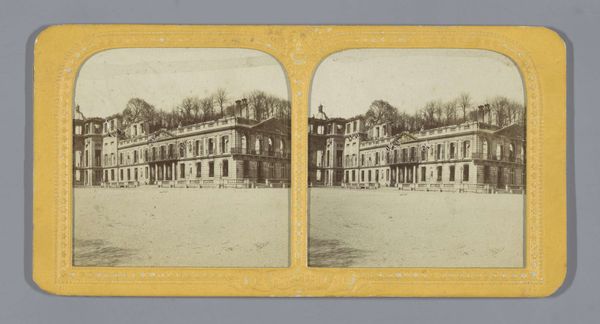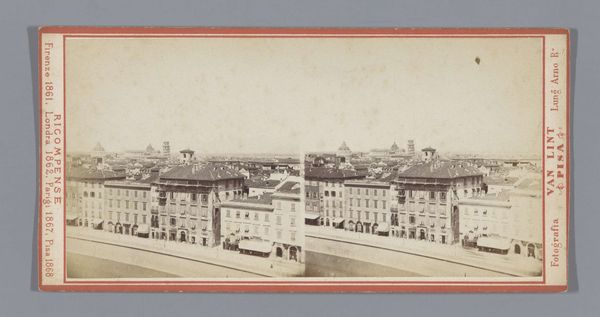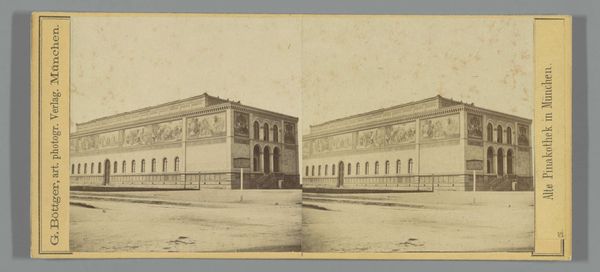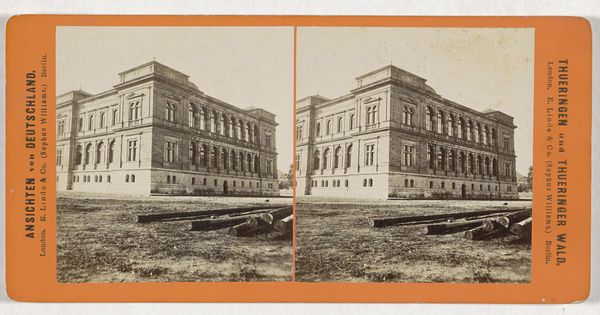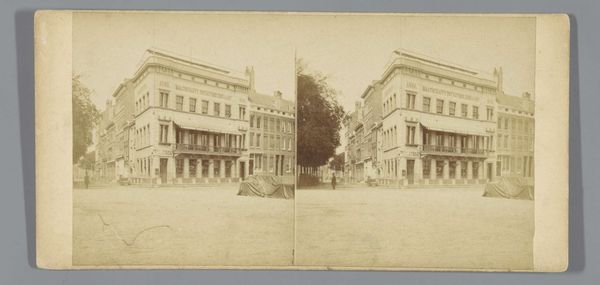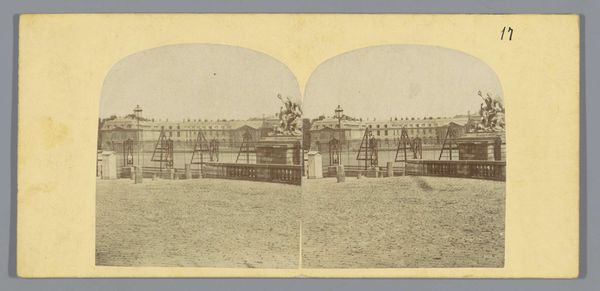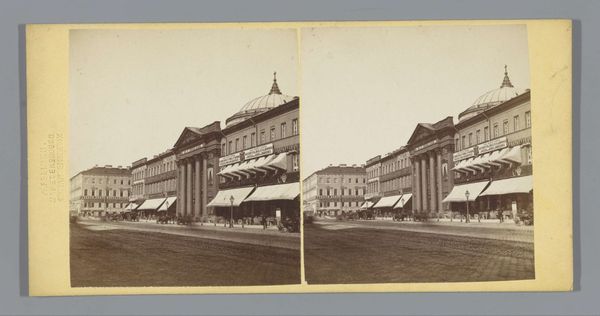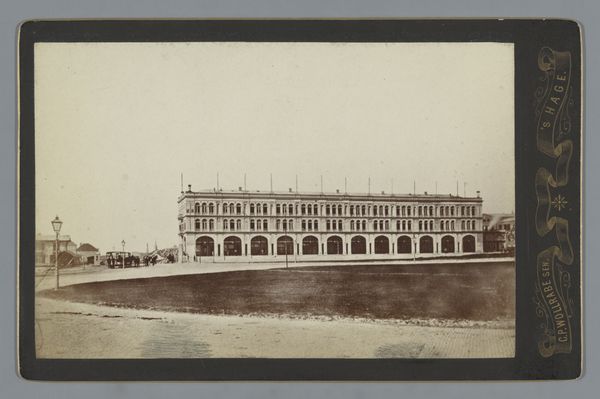
photography, albumen-print
#
landscape
#
photography
#
coloured pencil
#
cityscape
#
albumen-print
Dimensions: height 85 mm, width 170 mm
Copyright: Rijks Museum: Open Domain
Curator: This albumen print, dating from between 1850 and 1880, offers a "View of the Winter Palace in Saint Petersburg" by Albert Felisch. Editor: It's striking how the symmetrical duplication almost flattens the depth, compressing the monumental architecture into a single, almost abstract, plane. There is a stark tonal range, too. Curator: The palace, of course, stands as a symbol of imperial power, of the Romanov dynasty's authority over Russia. What does it signify in terms of socio-economic disparities of that period? We can view the photograph as evidence of the vast resources deployed to create and maintain this emblem of opulence. Editor: Absolutely, but let’s not overlook the photograph's construction; look at how the parallel lines of the facade's columns converge, or how the low horizon line amplifies the scale of the building. There’s a fascinating dialogue here between the photograph as documentary evidence and its deployment of perspective. Curator: And to add to this, considering Russia’s history of revolution, it is quite eerie seeing it now knowing how its representation transformed into a revolutionary beacon, challenging those very systems of power and inequality embedded in the state of imperial Russia at the time of this photo. Editor: Yes. The way the albumen print gives such an otherworldly texture—almost a velvety sheen in certain areas—further underscores this building’s inherent symbolic power within this piece of landscape photography. Curator: Looking at Felisch’s work gives me pause to think about visual sovereignty, a concept to explore the representation of political power at the level of the image itself. Whose story gets told, whose reality gets prioritized when documenting structures such as this palace? Editor: I’m glad you’ve reminded us to look closer! The print compels a viewer to question both its status as a reproduction and to see the architectural forms, so stark and striking to our contemporary eyes. Curator: Reflecting on all of this, it strikes me how the gaze and construction of these cityscapes shape the narratives around Russia's imperial past, with layers of identity, class, and cultural narrative interwoven with time and representation. Editor: Yes, analyzing the use of light, texture, and form offers a different understanding: photography becomes another symbolic gesture, reflecting its moment's specific sensibility about how to depict grand power, as the artwork demonstrates through materiality, tones, composition, and other unique components.
Comments
No comments
Be the first to comment and join the conversation on the ultimate creative platform.
